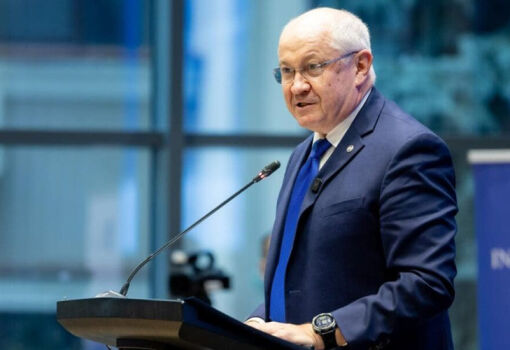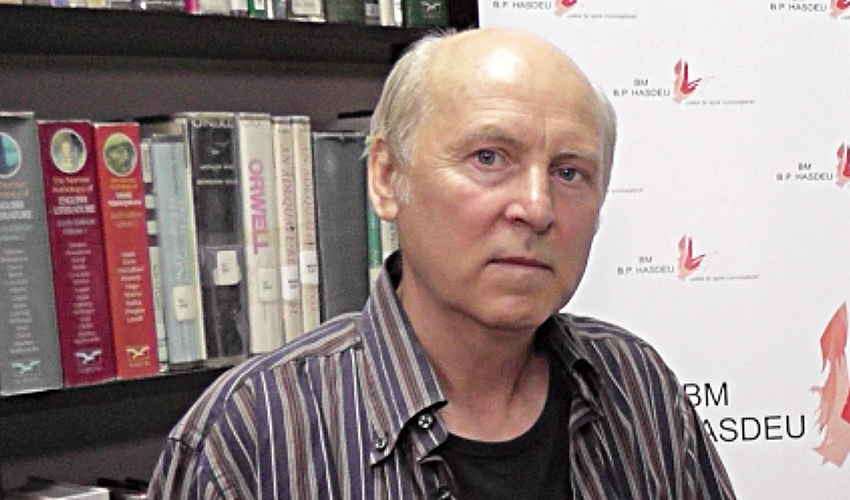
Vladimir Neznanov
This was announced by Vitalie Eşanu, President of the Association of Companies of Electronic Industry of Moldova (ACEM), General Director of Informbusiness, at the second Embedded Moldova conference, organized within Moldova Business Week 2025.
One of the topics of the conference was process automation, which is seen as one of the most practical starting points for Moldovan companies. Automation combined with IIoT (Industrial Internet of Things) is not just about replacing repetitive tasks with robots, but also about creating systems that reduce errors, optimize resources and allow employees to focus on higher value-added tasks.
For local companies, this means increased competitiveness, quicker adaptation to customer demands, and the ability to scale with fewer constraints. In essence, automation integrated with IIoT becomes the bridge between the traditional operations of today and the smart, fully digital factories of the future.
“The Internet of Things (IoT) and its industrial variant IIoT is characteristic of the fourth stage of industrialization. The first had steam and mechanization, the second had electricity and mass production, and the third had electronics, IT and process automation. The hallmarks of Industry 4.0 are the Internet of Things, artificial intelligence, cyber-physical systems and autonomous decision-making.
Aleku Dragomir, director of Orcolia-Lux, explained to Logos Press how this works: “We develop solutions based on industrial robots. We buy the robots themselves in China, finalize them here, create software, and sell them to foreign customers: the United States, Italy, and China.
In the smartphone, the interlocutor showed how an industrial robot from Moldova works in real time at one of the Italian enterprises.
“We and, naturally, the customer, receive all the telemetry. The customer directly controls its activities and movements. In case of any failures, it is possible to either remotely adjust the mechanism’s operation or send a local mechanic to physically adjust the device.”
The Moldovan company’s activities have already led to labor conflicts in the States. It turned out that it was more profitable to use Moldovan robots for loading and unloading work than local Mexicans. The latter went on strike.
“Yes, this is one of the features of automating production,” Dragomir commented to Aleka. – Automated machines are replacing low-skilled manual labor, and it’s been that way since the English manufactories of the 19th century.
In Moldova itself, smart gadgets are not taking root well. This is evident from the experience of ADD Technology.
“We have been producing smart meters for 35 years,” said Maxim Granatir, the company’s general director. – For electricity, water, heat. Nevertheless, there is still little demand for our products in the country”.
Back when President Petru Lucinschi was in office, ADD equipped a house in Chisinau, on Roz Street, with “smart” electricity meters. Everyone, including the head of state, came, looked, marveled and admired. However, 25 years later, the issue of using such meters has not been resolved, despite the fact that ADD exports its products to 30 countries.
Last week, the Ministry of Energy and UNDP in Moldova held a regular meeting of the Working Group for monitoring the pilot program of smart metering. The program is implemented in partnership with UNDP and is supported by electricity operators.
Cristina Peretiatcu, State Secretary of the Ministry of Energy, emphasized the importance of the digital transformation of the electricity sector and the shared responsibility of all stakeholders. And she stressed that the pilot program represents an important stage of modernization of distribution networks and active involvement of consumers in the energy transition process. The experience gained during this initiative will form the basis for the project expansion at the national level, contributing to improving energy efficiency, reducing costs and strengthening Moldova’s energy security.
And this after 25 years…
However, the country also has successful experience in implementing IIoT solutions.
Vladimir Neznanov, director and founder of Lovati-ATM, spoke about the 20-year experience of successful cooperation with the main heat supplier in Chisinau, Termoelectrica (formerly Termocom).
Centralized heat supply is one of the most problematic areas of the communal economy. The reasons are obvious – low energy efficiency, excessive wear and tear of equipment and pipelines, as well as huge leakages of heat carrier.
“The total length of heat mains and neighborhood heating networks in the capital is more than 1500 kilometers. Systematically there are leaks of heat carrier, which used to be determined by the difference – how much went out and how much came back. And it was possible to determine the places of leaks only when and where the hot water went outside,” recalls Vladimir Neznanov.
The very idea of tracking leaks with the help of meters was formed in Termocom somewhere in 2003-2004. The concept of an integrated automated control system was developed, in which one of the directions was remote collection of information from meters. The first site equipped with such a monitoring system was launched in 2006 in the Chokan sector. Then other districts were gradually connected.
Heat meters connected to two ultrasonic flow meters – on the supply and return lines – were installed in the heating network nodes. The readings from them (temperature and flow rate) are transmitted via radio channel to the central control room and processed by a program that allows monitoring of all heating units. If the flow rate readings on the supply and return lines differ, it is clear that there is a leak somewhere on the site. From large nodes the control goes to smaller ones and it is found out exactly on which section the problem occurred. Whereas in the past leaks could exist for months, now they are localized literally within an hour and eliminated promptly.
The results have exceeded all the most daring expectations. When everything started, the make-up water flow rate was about 800 cubic meters per hour. After the first stage of implementation of the remote monitoring system: 50 cubic meters in summer and about 100 cubic meters in winter.
In terms of money, even then the savings were about $3500 per hour. With the growth of tariffs, the saved amount also grows.
During the operation of the system Termoelectrica saw that it is an excellent tool for network optimization. Monitoring can be used to detect incorrectly designed or installed sections of pipelines.
The heat supplier now receives all information about what is happening in the network in real time. All problems are instantly detected and corrected.
The cost reduction immediately after the system implementation amounted to 16-17%, so this investment paid off quite quickly.(In some areas – within a month).
Now Chisinau heat consumers receive heat in full volume and, practically, without additional costs, which our suppliers are so fond of including in the tariffs.













